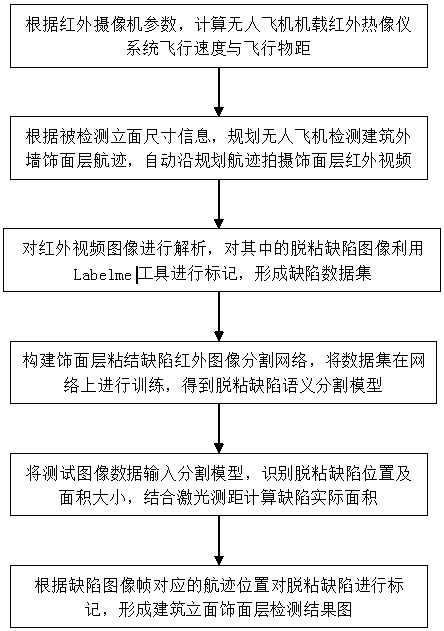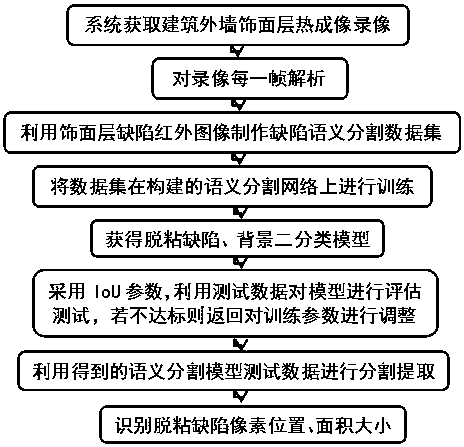Building facing layer debonding defect identification method based on unmanned aircraft thermal imaging video
A technology for unmanned aircraft and defect identification, which is applied in material defect testing, aircraft, motor vehicles, etc., can solve the problems of small infrared thermal imaging range, unreliable reliability, and unclear pixel edges, so as to improve detection accuracy and intelligence The effect of improving the level of automation, increasing the frequency of testing and evaluation, and avoiding related accidents
- Summary
- Abstract
- Description
- Claims
- Application Information
AI Technical Summary
Problems solved by technology
Method used
Image
Examples
Embodiment Construction
[0063] The present invention will be further described below in conjunction with the accompanying drawings.
[0064] Such as figure 2 As shown, the implementation device of the present invention includes a laser rangefinder 1, an infrared thermal imaging camera 2, a multi-rotor unmanned aerial vehicle 3 with a track planning system, a cloud platform 4, and an aircraft platform of the multi-rotor unmanned aerial vehicle 3. A cloud platform 4 is provided, and a damping device is provided at the connection between the cloud platform 4 and the multi-rotor unmanned aerial vehicle 3. The cloud platform 4 is provided with an infrared thermal imaging camera 2, and the infrared thermal imaging camera 2 is provided with a laser range finder. 1. Infrared thermal imaging cameras and laser rangefinders can transmit data back to ground computers through a wireless transmission system.
[0065] Such as figure 1 Shown, the present invention comprises the steps:
[0066] 1) Debonding defe...
PUM
 Login to view more
Login to view more Abstract
Description
Claims
Application Information
 Login to view more
Login to view more - R&D Engineer
- R&D Manager
- IP Professional
- Industry Leading Data Capabilities
- Powerful AI technology
- Patent DNA Extraction
Browse by: Latest US Patents, China's latest patents, Technical Efficacy Thesaurus, Application Domain, Technology Topic.
© 2024 PatSnap. All rights reserved.Legal|Privacy policy|Modern Slavery Act Transparency Statement|Sitemap



